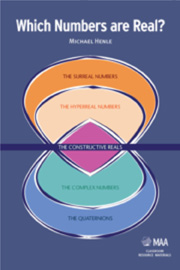6 - The Hyperreals
from III - ALTERNATIVE LINES
Summary
Introduction
The hyperreal number system was invented comparatively recently (in the 1960s). What makes it unusual is that it contains infinitely small numbers: hyperreals so small that they are greater than 0 but less than 1/n for all n in ℕ.
Such numbers, called infinitesimals, have been around for a long time. Leibniz used them in his development of the calculus, and they are still taught in the form of the symbols dx and dy used in differentiation and integration. Right from the beginning of the calculus (in the 1680s), the use of infinitesimals was criticized, and for years the calculus including infinitesimals was used by scientists and mathematicians without sound logical grounds. When the calculus was finally given a firm foundation (in the mid 1800s), it was using epsilons and deltas, instead of infinitesimals. As a consequence, infinitesimals were further banished from theoretical mathematics. It was a surprise when, in the early 1960s, Abraham Robinson discovered how infinitesimals could be introduced into the real number system and used much like ordinary numbers. Equally surprising was that a development of such interest in the practical realm of the calculus arose in the highly abstract world of mathematical logic.
The hyperreals represent a relatively liberal philosophy of mathematics. Their construction depends on highly non-constructive arguments. In particular, we require an axiom of set theory, the well-ordering principle, which assumes into existence something that cannot be constructed.
- Type
- Chapter
- Information
- Which Numbers are Real? , pp. 125 - 170Publisher: Mathematical Association of AmericaPrint publication year: 2012



